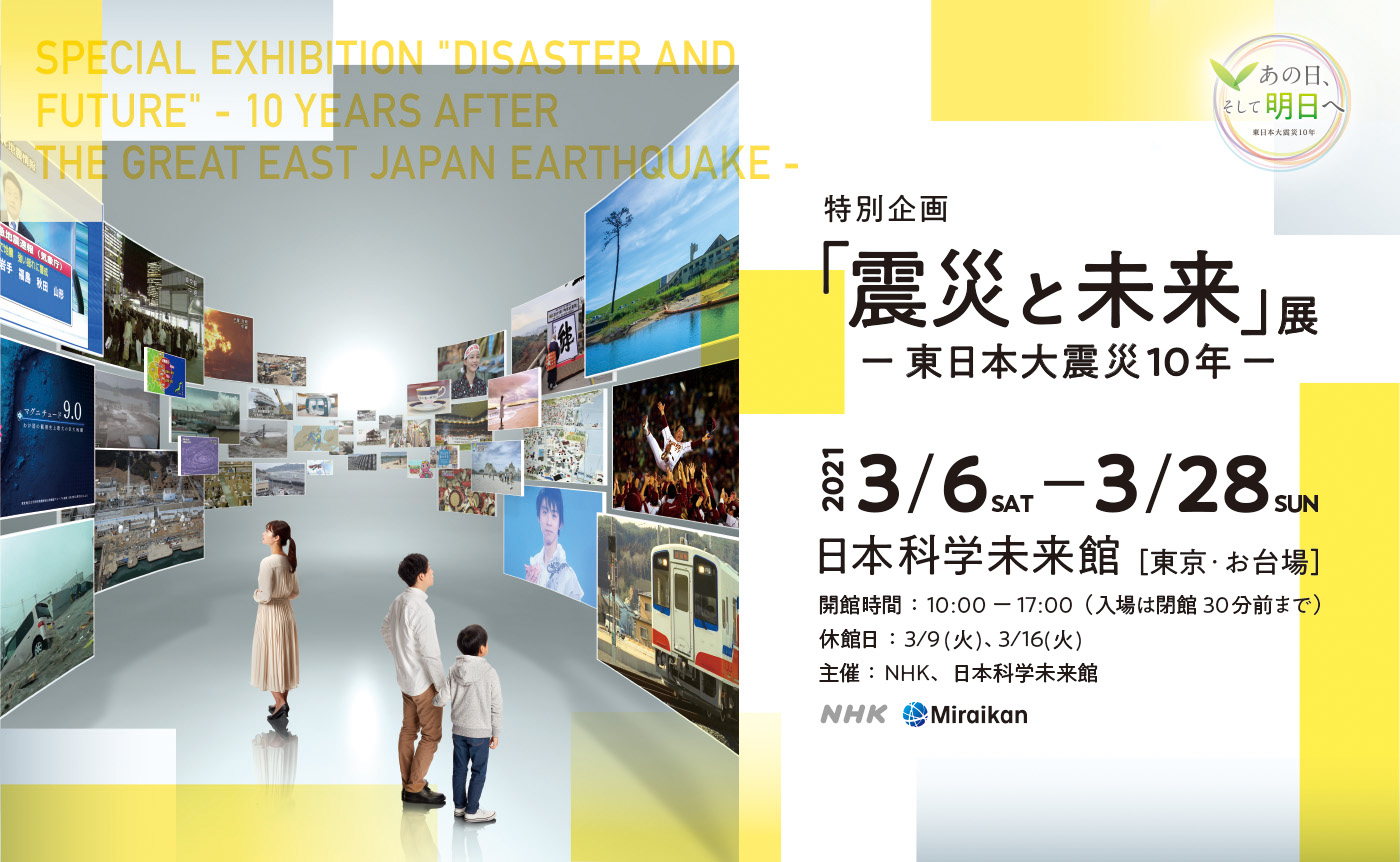
This exhibition has ended.
Exhibition Outline
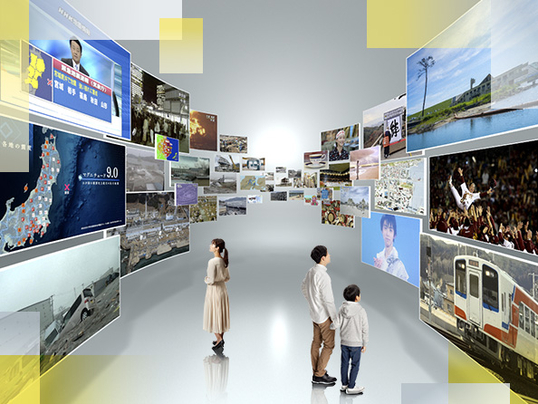
10 Years Since the Great East Japan Earthquake on March 11, 2011.
Many precious lives were lost, and major scars still remain in the regional community. Natural disasters have occurred frequently in various parts of Japan since then as well. Amid concerns over the potential for an earthquake striking directly beneath Tokyo, the coronavirus pandemic is making it all the more difficult to take measures to respond to such events. We who live in Japan are constantly aware of the “risks” and “challenges” that disasters pose.
This exhibition follows the three themes of “Memories of the Great East Japan Earthquake,” “The bonds formed by people afterwards,” and “Issues for the future,” in order to ensure that the earthquake disaster is not forgotten and that the lessons learned are conveyed to the future. We review videos and materials that NHK recorded/accumulated in the face of disasters to date through a wide variety of presentations. We also introduce the initiatives and issues for reconstruction through displays of objects, each with a story related to disasters/reconstruction, and preparations for future disasters.
Exhibition highlights
Positioned across three zones, this exhibition asks visitors to reexamine the “records” of the past, and to reinterpret those records as a collective “memory.” On that basis, it is structured so that visitors may consider the disaster prevention and mitigation measures that are required for “our tomorrow” as “something that affects me.”
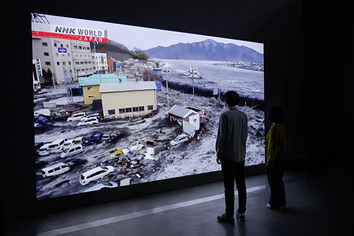
ZONE1: Memories of the Great East Japan Earthquake
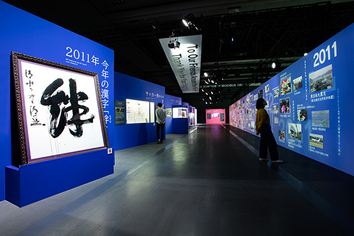
ZONE2: The bonds formed by people afterwards
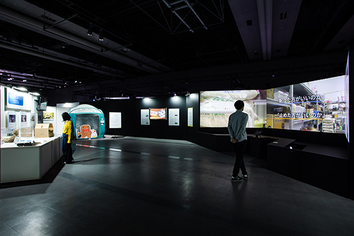
ZONE3: Issues for the future
Zone 1: Looking back at the Great East Japan Earthquake with NHK Archives
Experience the disaster via projections and news digest footage from the first 72 hours. Relive the time of the earthquake from records of the nuclear accident and a reproduction of an evacuation shelter.
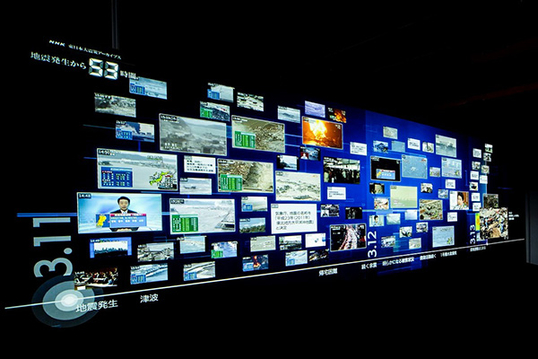
NHK Great East Japan Earthquake Archives “The First 72 Hours”
Presents a timeline of the first 72 hours following the earthquake using NHK news videos. Reexamine what happened and how events unfolded.
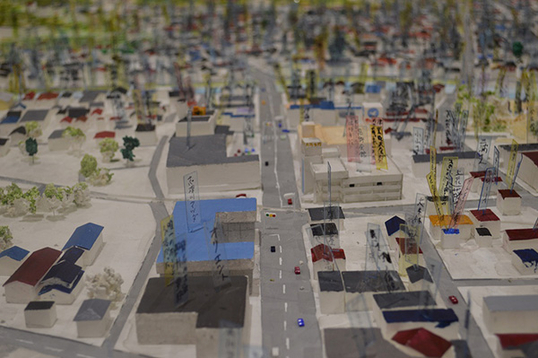
The “Lost Homes” model restoration project, reconstruction assistance in response to the Great East Japan Earthquake
Many towns and villages were lost in the Great East Japan Earthquake. This project, in cooperation with architecture students across Japan, is an initiative to restore these towns to their pre-disaster state using models at a 1:500 scale. Workshops were held in areas that lost towns and villages to the Great East Japan Earthquake, and residents participated by planting “memory flags” in locations that evoked memories for them—transforming “lost homes” into a “town of memories” filled with remembrances. This model was created in 2013 as a “town of memories” for Shizugawa in Minamisanriku Town, Miyagi Prefecture.
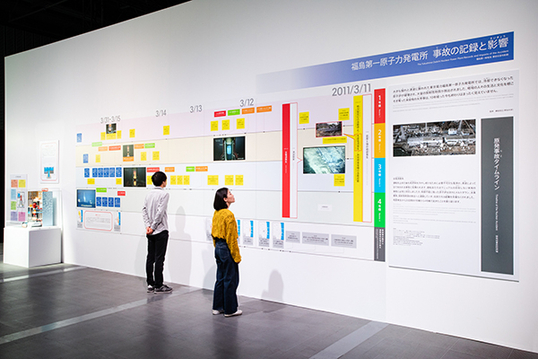
The Fukushima Daiichi Nuclear Power Plant: Records and Impacts of the Accident
This sheds light on the circumstances and impact of the accident at Tokyo Electric Power Company’s Fukushima Daiichi Nuclear Power Plant, which suffered catastrophic damage as a result of the massive tremor and subsequent tsunami, while interspersing television footage from an NHK Special and the testimonies of evacuees.
Supervised by Tadahiro Katsuta (Meiji University)
To You, Dear Heart – Personal Messages with Photos
“To You, Dear Heart” is a collection of memorial photos of victims of the Great East Japan Earthquake, paired with messages from family. It conveys the sanctity of each individual life and shows how those left behind are continuing with their lives. We invite you to have a look at this exhibit, which incorporates the latest digital technologies.
* Only available in Japanese.
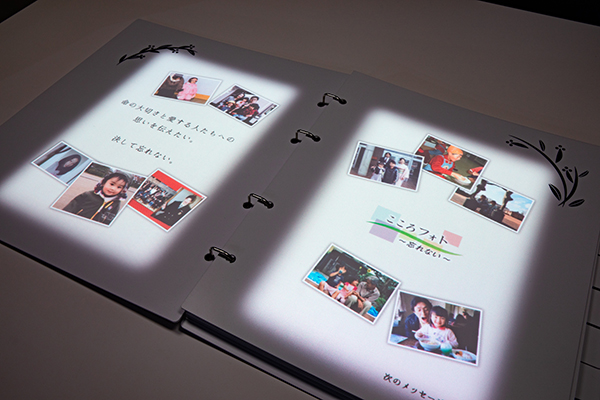
To You, Dear Heart – Personal Messages with Photos
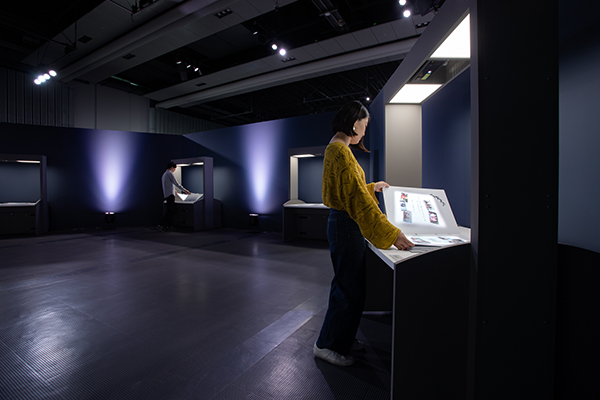
Zone 2: From That Day to the Next: 10 years of Recovery
Displays a collection of items from Japan and overseas that tell stories of support and recovery, along with NHK news footage, to show a history of Tohoku’s recovery spanning 10 Years—from the day of the disaster to now.
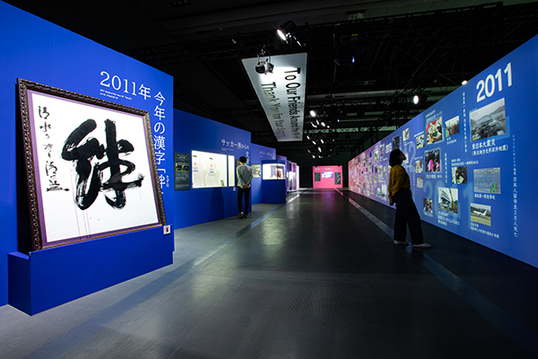
Recovery time tunnel (2011-2020)
The course of the 10 years of recovery from that day is revisited on a giant screen, by interspersing events that took part in society with news footage. The support that was provided from inside and outside Japan is introduced using various related items, with the focus on activities for rebuilding the lives of people in disaster-affected areas, such as the restoration of the Sanriku Railway.
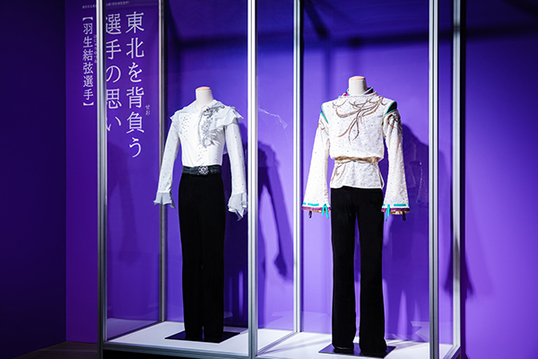
Costume worn by figure skater Yuzuru Hanyu
Displays the outfits and other items worn by figure skater Yuzuru Hanyu in “Hana wa Saku” (Flowers Will Bloom, the NHK-produced song for supporting the post-disaster recovery), and in his “Seimei” performance.
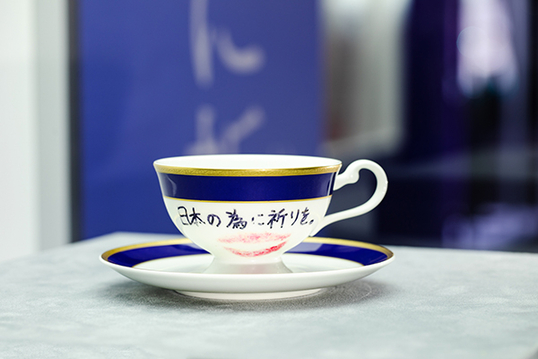
Lady Gaga’s Teacup
As part of her charity to support Japan’s recovery, popular American singer Lady Gaga put a teacup up for bids in an online auction. The teacup was later donated to Miyagi Prefecture by the bereaved family of the deceased winning bidder, who wanted it to be used to keep memories of the earthquake from fading. The cup has Lady Gaga’s autograph and kiss mark as well as the phrase “Pray for Japan” written in Japanese.
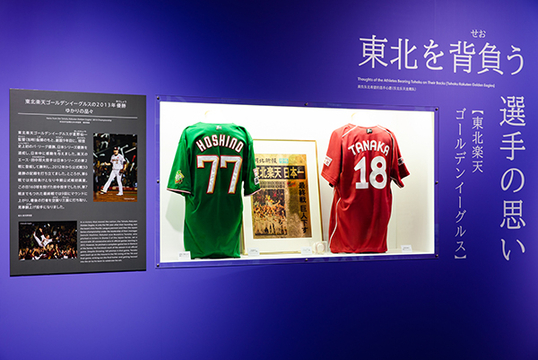
Items from the Tohoku Rakuten Golden Eagles’ 2013 Championship
In 2013, nine years after the Tohoku Rakuten Golden Eagles baseball team was founded, the team won both the Pacific League Championship Series and the Japan Series for the first time in baseball history, which was deeply inspiring to all of Japan.
[Exhibits] Items on display include the uniforms worn by then-manager Senichi Hoshino, and the uniform worn by player Masahiro Tanaka
Items from the NHK serial television novel, “Ama-chan”
Displays items with a connection to “Ama-chan,” the television novel series that NHK produced in the first half of FY2013 and broadcast on the General Television channel and BS Premium channel.
[Exhibits] Items on display include scripts from Amachan (from the 23rd week and final week)
Items with a connection to Nadeshiko Japan’s victory
Nadeshiko Japan (Japan’s women’s national football team) won the FIFA Women's World Cup held in Germany in 2011. In the cup final, no decision had been reached despite going into extra time, but Nadeshiko Japan went on to achieve the team’s first victory in the championship by defeating the United States 3-1 in a penalty shoot-out, a result that provided encouragement to Japan in the immediate aftermath of the earthquake disaster.
[Exhibits] FIFA Women's World Cup 2011TM Winner’s Trophy; “To Our Friends Around the World / Thank You for Your Support” banner
Zone 3: Think about the future with you
We make use of the lessons of the Great East Japan Earthquake to think about our future and prepare for the natural disasters and associated complex disasters that frequently occur across Japan every year.
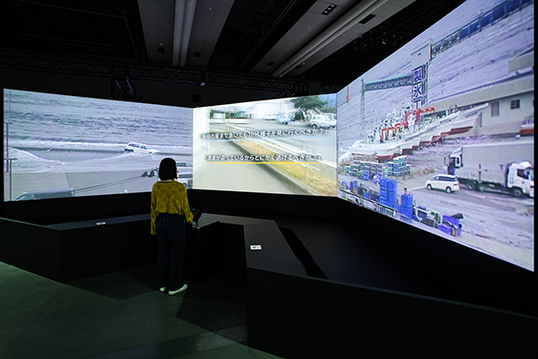
A Disaster-Prevention Crossroads: What Should you Do?
Experience a range of choices as a disaster unfolds in a virtual space. Think about what you can do to prevent disaster.
*“Crossroads” is a registered trademark of the Team Crossroads copyrighted works.
*Only available in Japanese.
Supervised by Katsuya Yamori (Disaster Prevention Research Institute, Kyoto University)
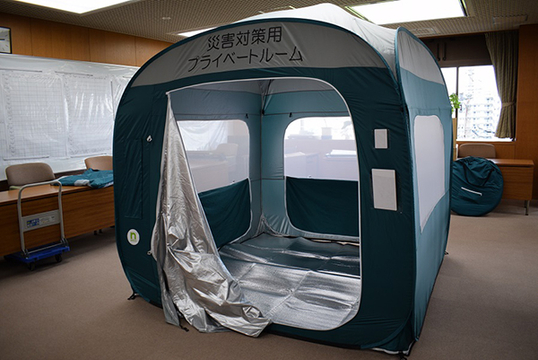
Infectious Diseases and Disaster Countermeasures in the Era of the “New Normal”
We introduce a new type of evacuation shelter prepared to face new, complex disasters. We display a “disaster-response private room,” a tent for preventing droplet infection that is useful in preventing the spread of the novel coronavirus.

HOW TO CRAFT SAFETY
We’ve gathered together disaster-prevention ideas generated across Japan, based on the question, “What could we do to save even a single life?”
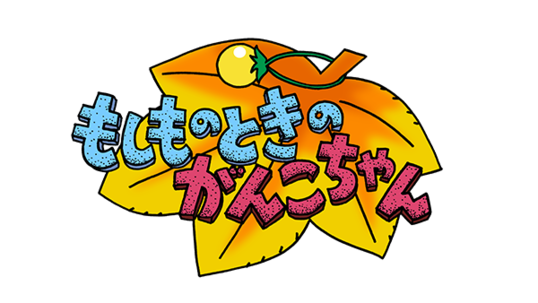
Let’s Prepare for the Next Big Earthquake!
Popular puppet, “Ganko” the pink dinosaur, will guide children with the important emergency tips to survive in case of an earthquake.
About Online Booking & Visiting
-This exhibition contains the footage of the Great East Japan Earthquake, such as strong shaking and tsunami right after the earthquake. (We provide the escape line of the area for those who hope to avoid it.)
-Small children must be accompanied by a parent or guardian.
-The video of the news program is the information at the time of broadcasting, and there are some that have been newly confirmed or the situation has changed.
-Photography is prohibited in the following exhibits.
ZONE 1
-The Fukushima Daiichi Nuclear Power Plant: Records and Impact of the Accident,(Some video)
-“To You, Dear Heart – Personal Messages with Photos”(Some video)
ZONE 2
Overview
- Title
- “Disaster and Future” - 10 Years after the Great East Japan Earthquake -
- Period
- Saturday, March 6 to Sunday, March 28, 2021 *Closed March 9 and March 16
- Opening hours
- 10:00-17:00 *Last admission 30min. before closing time.
- Venue
- Special Exhibition Zone 1F, Miraikan
- Admission fee
- Free / pre-booking system (pre-booking online is required)
- Organizers
- NHK (Japan Broadcasting Corporation), Miraikan - The National Museum of Emerging Science and Innovation
- Special Exhibition Official Website
- For Inquiries
-
NTT Hello Dial: +81-3-5777-8600
(from 08:00 to 22:00)
